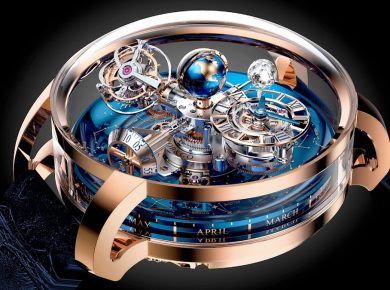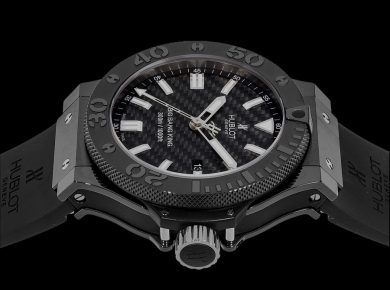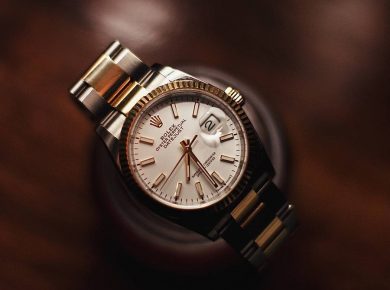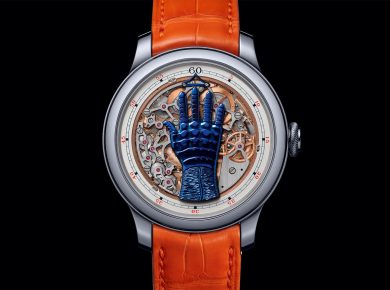
A watch can mark time. A watch can tell a story. Occasionally, it can hold an entire universe. The Christiaan van der Klaauw Planetarium “Julie” sits firmly in that last category, created not for a commercial release but as a personal tribute with emotional weight at its core. Commissioned by a longtime friend of the atelier and dedicated to his young daughter, this unique piece carries both intimate symbolism and technical accomplishment.
Christiaan van der Klaauw has long been recognized for astronomical complications, with the brand’s Planetarium mechanism standing as one of the most poetic achievements in modern horology. In this instance, the challenge was heightened by a request that went beyond engraving a caseback or changing a dial color. The collector envisioned a skeletonized interpretation of the famous Planetarium watch, a concept that required rethinking the architecture of nearly every visible component. The result is a piece that maintains the mechanical poetry of the original while letting light, space and structural detail play across the movement.

At the heart of the watch is the brand’s defining feature: the smallest mechanical planetarium ever placed in a wristwatch. Six planets – Mercury, Venus, Earth, Mars, Jupiter and Saturn – move in accurate relation to their orbital periods around the sun. Their motions are not symbolic or simplified. Each one follows the rhythm dictated by astronomical cycles, echoing the vastness of celestial mechanics within a case that sits on a wrist. The wearer does not simply read the time. They observe a miniature solar choreography, rendered with patience and precision.

The transformation required to convert this well-known complication into a skeletonized form was significant. Bridges and plates that would normally remain hidden beneath a dial had to become visual elements. Structural integrity had to remain uncompromised while excess material was removed to create depth and transparency. The watch features carefully executed hand-beveling across its movement, including an astonishing seventy inward angles. In watchmaking, inward angles are a mark of skill that cannot be replicated by machine, each one demanding control and sensitivity to finish cleanly. The level of care invested inspires a quiet respect, even before one takes in the cosmic theme.

Titanium forms the case, chosen for its strength and lightness, which allows the relatively complex movement to feel unexpectedly wearable. The bezel is another story entirely, crafted from meteorite. The material aligns perfectly with the watch’s astronomical identity, adding a literal fragment of space to a mechanism designed to describe celestial motion. Meteorite patterns vary from piece to piece, defined by crystalline formations created as metals cooled over millions of years. In this watch, the bezel serves not only as an aesthetic flourish but as an artifact – a piece of the cosmos to accompany the representation of the cosmos inside.

The watch’s color palette, proportions and finishing were selected to express a gentle dedication to its namesake. While technically sophisticated, the tone remains personal and warm. The Planetarium “Julie” is not a statement of excess or dominance. It is a piece meant to reflect care, memory and connection. A father wanted a watch that could speak to his daughter, even as she grows and sees the world differently. Time becomes more than measurement. It becomes reminder and presence.
Collectors often look to uniqueness, rarity, prestige, narrative. This watch sits in a category that does not require comparison. It is singular by intention and origin. Yet it does offer something instructive for the broader field of haute horlogerie. Custom work at this level goes beyond adjusting engravings or color combinations. It involves re-engineering a movement, reconsidering every angle of visibility, finding harmony between technical exactness and emotional sentiment.

Christiaan van der Klaauw already holds a distinct place within watchmaking due to its focus on astronomical complications. The Planetarium “Julie” reinforces that identity in an elegant, personal way. It is a gentle reminder that watches do not need to chase novelty to remain meaningful. They can instead carry personal histories, anchored in craftsmanship and imagination. The result in this instance is a timepiece that contains both the vast mechanics of the solar system and the intimacy of a dedication from parent to child.
A universe in motion. A story held close. A technical achievement rendered quietly and beautifully. The Planetarium “Julie” stands as evidence that horology can still feel both grand and profoundly human.






